Victor Marius Alphonse Petipa was born in Marseille, France on the 11th March 1818 to Jean Antoine Petipa (1787-1855), a renowned Ballet Master and teacher, and Victorine Grasseau-Maurel (1794-1860), a tragic actress and drama teacher. He was the third of six children – Joseph Lucien (1815-1898), Elisabeth Marianne (1816), who died in infancy, Jean Claude Tonnerre (1820-1873), Aimée “Amata” Victorine Anna (1824-1905) and Adélaïde Antoniette (1826-unknown).

Portrait of Marius Petipa at age nine in his father Jean Petipa’s production of Jocko, the Ape of Brazil (1827)
Early childhood
When the infant Marius Petipa was just 3 months old, his parents were invited to Brussels, where the family settled. Petipa received a general education at the Grand College, but he also attended the Fétis Conservatory where he studied music and learned to play the violin. On the 19th March 1823, Petipa made his first appearance on stage when he played a little Cupid in his father’s staging of Pierre Gardel’s Psyché et l’Amour; his father had also appeared in this ballet as a child. Petipa began dancing at the age of 7, studying under his father. At first, however, he resisted as he cared little about the art form, but with convincing from his mother, he accepted that it was his duty to obey and follow his father’s will. He eventually fell in love with the art form of ballet and after his stage début in 1823, there came more débuts in the years that followed. On the 25th August 1826 at the age of 8, he made his début in Jean Petipa’s staging the Gardel ballet La Dansomanie. In 1830, the Belgian Revolution broke out during a performance of the opera Fenella, or La Musette de Portici, which put a huge strain on the Brussels theatres. The theatre activities were discontinued for fifteen months and Jean Petipa was suddenly without a position. In 1834, after a twelve year stay in Brussels, the Petipa family relocated to Bordeaux after Jean Petipa was invited as Ballet Master of the Grand Théâtre de Bordeaux. The family spent five years in Bordeaux where the 16 year old Marius Petipa completed his ballet training under the great French Ballet Master, Auguste Vestris.
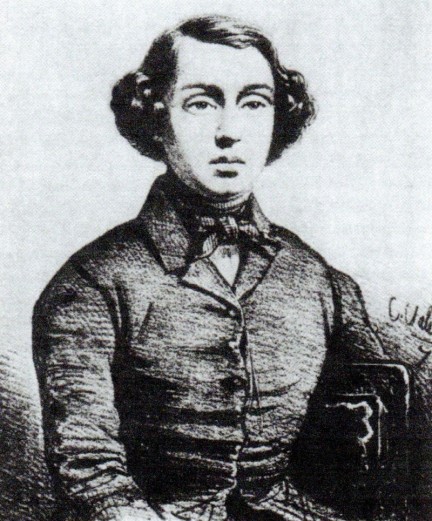
Marius Petipa, aged fifteen (ca. 1833)
Nantes
In 1839, at the age of 21, Petipa received his first employment when he was appointed Premier Danseur at the Ballet de Nantes. Petipa writes in his memoirs that he and his father embarked on a tour to the United States with a small troupe of European dancers led by his former danseuse Eléonore Lecomte. However, according to research by Sergey Konaev, Petipa did not go on this tour, only his father did, for the theatre listings in local French newspapers state that he was busy performing in Nantes at the time. Petipa was engaged at Nantes for three seasons from 1839 to 1842 and it was during his time in Nantes that Petipa first began to show his abilities as a choreographer. It seems that it was on the 16th July 1840 that he made his professional début as a choreographer when he presented a two-scene ballet called The Scatterbrain, or The Love Affair. There are also traces of other dances that he choreographed for himself and two sisters in the company, Armande and Thérèse Ferdinand, including a pas de trois in the opera La Favorite on the 25th April 1841, Une nouvelle Tyrolienne on the 9th December 1841 and a Saxon dance in the style of a Cracovienne on the 14th March 1842. Petipa writes in his memoirs that he choreographed three ballets of his own creation for the Bordeaux company, the three ballet he names – Le Droit du Seigneur, La Petite bohémienne and La Noce à Nantes – but according to his biographer Nadine Meisner, these ballets have not been found. Petipa also writes in his memoirs that he broke his leg on stage during the second season and the absence of his name on theatre bills during February and March 1840 suggests that he did indeed sustain an injury. During the six weeks of recovery, he discovered ‘how the majority of impresarios treat the actors whom they exploit’. Although his injury had been sustained while performing, he learnt that, without
performances, his salary would be withheld. At some point during his time in Nantes, Petipa spent two months in Paris, where he took classes with his old teacher Vestris and on the 27th October 1842, he and his brother Lucien participated with Carlotta Grisi in a benefit performance for Lucinde Paradol, a retired actress of the Comédie-Française.
Bordeaux
In 1843, Petipa returned to Bordeaux where he was invited to be Premier Danseur at the Grand Théâtre. For his first performance on the 13th May, he danced the role of Albrecht in Giselle with the Prima Ballerina Elisa Bellon, who had returned to Bordeaux after dancing for a year at the Paris Opéra. However, Petipa’s time in Bordeaux got off to a rocky start. His début performance received mixed reviews, with one publication, La Sylphide, describing him as “young, with good physique, light and with good schooling, but a rigid and inexpert… work will make him acquire what he needs.” Another publication, L’Indicateur, reported: “M. Petipa is a very young dancer who shows excellent abilities; his dancing is rather weak, it is true, but his bearing is good; he mimes and gestures well.” The mixed reception he received ultimately led to Petipa receiving a demotion and after two more performances, which were not met with a kind response, he was accepted into the company as Deuxième Danseur. After a bad start, things began to improve for Petipa. During his time with the Bordeaux company, he became partner to the ballerinas Joséphine Delestre and Célina Mouliníne and by May 1843, his repertoire had expanded to include roles in The Village Sleepwalker, The Millers, La Sylphide, La Fille mal gardée, La Tyrolienne and Spanish Intrigues. He danced Osvald in Nathalie, or The Swiss Milkmaid and also danced in Auber’s opera Le Dieu et la Bayadère. He also danced in character dances, with Mouliníne often as his partner, especially in Spanish dances, such as the cachucha, bolera and jota aragonesa.
Petipa claimed that during his second tenure in Bordeaux, he staged his own stagings of four ballets – La Jolie Bordelaise, Les Vendanges, L’Intrigue Amoureuse and Le Langage des Fleurs. However, like the three ballets he claimed to have staged in Nantes, no evidence has been found for the four he names for Bordeaux, though that does not mean that these four ballets never existed. According to the posters of the Grand Theatre, however, La Jolie Bordelaise appears to have been the same ballet as Grisette de Bordeaux, which is recorded, but not attributed to Petipa. By the end of the season, however, after only eleven months in the theatre, Petipa was forced to join the stream of dancers leaving Bordeaux after, on the 13th May 1844, the theatre enterprise was declared bankrupt. Petipa’s departure was announced by the press on the 15th June and three days earlier, his passport had been issued for travel to Madrid.
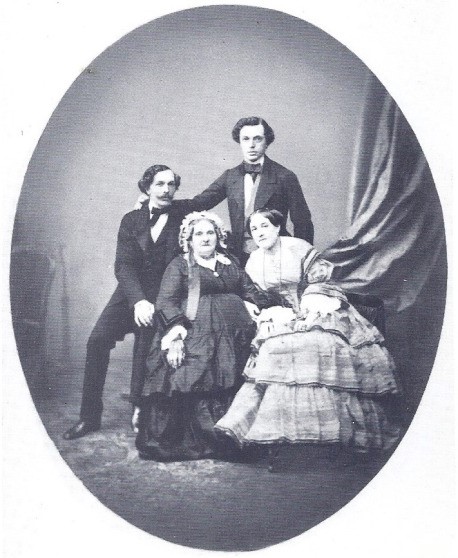
The Petipa family – Petipa with his brother Lucien, his sister Victorine and his mother Victorine
Spain
After Bordeaux, Petipa was invited to Madrid where he was appointed Premier Danseur at the Teatro del Circo under Jean Baptiste Barrez and was engaged as the partner of the renowned French Prima Ballerina Marie Guy-Stéphan in some of the famous Romantic ballets. For his Spanish début on the 24th June 1844, he and Guy-Stéphan danced the leading roles in Giselle to success. In a subsequent performance, they danced a polka and an allemande in Albert’s ballet La Jolie Fille de Gand. Petipa also danced the leading roles of Luis in Jean Coralli’s La Tarentule and Frédéric in Joseph Mazilier’s Le Diable amoureux. On the 12th November 1844, Petipa danced a pas de quatre in the second act of Coralli’s La Péri, while Guy-Stéphan danced the titular role. As the months passed, the reviews of Petipa’s performances gained more and more enthusiasm and when the company was reorganised for the 1845-46 season, only Petipa and Guy-Stéphan were chosen of all the existing dancers to remain for another year, while new dancers from Bordeaux, Joséphine Delestre and Frédéric Montessu, were invited for the new season. Montessu was soon praised as the best dancer in the city of Madrid, accomplishing what Petipa lacked in classical dance, but Petipa was praised for his character and ballroom dancing, his acting and his abilities as a partner. What Petipa’s pre-Russian career has taught us is that he was more of a character dancer than a classical dancer and was a highly accomplished actor and mime artist and a good partner.
In the spring of 1846, Petipa and Guy-Stéphan were invited by the impresario of the Teatro Principal of Seville, Fernando Millet to tour Andalusia with Millet’s company. They began their tour on the 21st April in Seville and travelled to seven other cities, including Cádiz, Málaga and Granada, where they performed extracts of the Madrid repertoire. For example, in Seville, Petipa and Guy-Stéphan danced a pas de deux from Ondine, a polka and a jalero de Jerez and elsewhere, they performed extracts from La Esmeralda, a pas de deux from the ballet Aurora and a tambourine dance. The tour also coincided with an annual festival in Sanlúcar de Barrameda, an account of which Petipa gives in his memoirs:
During the tour, we happened to be present at the big festival in San-Lúcar, where were gathered all the well-known cuadrillas, the picadors, and others who followed the toreadors, for the bullfights which take place in the biggest Spanish arenas.
All the richest, most noble Spaniards gathered there, to enjoy for three days the best-loved show in Spain. There was a bullfight every day for three days. In the evening, all the visiting and local families fill the streets or gather on the big hotel balconies. In every street, masked students give concerts on their guitars and mandolins. As soon as they start to play the famous fandango, the couples form, and all is forgotten in the whirlwind of dancers.
I wore a Spanish costume, I felt just like a Spaniard, and audaciously invited an attractive Spanish woman to dance; and together with three other couples we tempestuously, madly did this characteristic Spanish dance. – (Russian Ballet Master: The Memoirs of Marius Petipa, pg. 14-15)
It was during his time in Spain that Petipa acquired good knowledge of traditional Spanish dance, knowledge that he would later showcase in some of his most famous ballets, especially Don Quixote. Again, like he did with his time in France, Petipa claimed to have created new ballets while in Spain – Carmen and her Toreador, The Pearl of Seville, The Adventure of the Daughter of Madrid, The Flower of Granada and The Departure for the Bullfight – but these ballets have not been found, though that does not necessarily that they never exited. Some of them may have been ad hoc divertissements for special occasions or for the Andalusian tour.
In 1845, Petipa’s father Jean was appointed Ballet Master of the Teatro del Circo, possibly at the recommendation of his son, replacing Barrez. On 26th December 1845, Jean created and staged a ballet called The Milliners of Paris for a corps de ballet benefit performance, but the ballet did not survive its première performance. Probably the most significant contribution Jean Petipa made during his time in Madrid was his staging of two of Jules Perrot’s recent ballets. On the 18th November 1845, Jean staged La Esmeralda, in which he played the role of Quasimodo opposite Guy-Stéphan as the titular gypsy girl and Marius danced a Waltz of Madness. Months earlier, on the 30th July 1845, Jean had staged Ondine, ou La naiade, of which Guy-Stéphan had been an original cast member in the 1843 London production, originating the role of Giannina. For the ballet’s Spanish première, however, she was upgraded to the role of the titular naiad and Marius Petipa danced the role of the bewitched fisherman Matteo. In the second act of Ondine, an interesting incident occurred. In accordance with the ballet’s libretto, Petipa was required to kiss Guy-Stéphan, but at the time, kissing a woman on stage was forbidden in Spain. Nevertheless, Petipa, his father and Guy-Stéphan defied this censor and staged the kiss, which landed Petipa in some hot water with the Spanish authorities. In his memoirs, Petipa amusingly describes this event:
Spain is a country of love and adoration of women, but at the same time, it has customs sharply at variance with the free, open-hearted display of passion which is characteristic of all Spanish dances. On the stage, an artist is strictly forbidden to kiss a woman, even if it is required in the course of the action.
In one of the Tyrolian character dances, which I did with Mme Guy Stéphan, the dancer begs a kiss of his partner, but is met with refusal. Still a second time he perseveres, begs the same – again a refusal. The third attempt of the lover softens the lady, she agrees, and I, getting into the role, take advantage of the received permission with such a realistic reproduction of the intended act, that even the worshippers of the school of Mr Stanislavsky would be filled with satisfaction. As soon as I left the stage, and withdrew to the wings, I found myself in the presence of the chief of the Madrid police, who had left his box and rushed to the stage, in order to announce to me the strictness of the prohibition of kissing a lady on the stage. – (Russian Ballet Master: The Memoirs of Marius Petipa, pg 16-17)
At a later performance, the kiss was banned on the orders of the Chief Police, which only ruined the pas. Luckily, after intervention from Salamanca, the Director of the Teatro del Circo, who had to explain its significance to the authorities, the kiss was reinstated and was met with a very enthusiastic response from the audience. On top of all that, Petipa avoided any kind of criminal prosecution over the matter.
The Madrid stagings of Ondine and La Esmeralda were huge successes and Jean Petipa also contributed his own creation, a three-act ballet called Farfarella, or The Daughter of Hell, which premièred on the 3rd March 1846, with Marius in the leading role of Fablo the painter. The careers of both father and son had grown with success; Marius Petipa was now a celebrity and he and Marie Guy-Stéphan were now on the same breath as Carlotta Grisi, Perrot and his teacher Vestris. However, in 1847, Petipa’s time in Spain came to an abrupt end after an incident involving his personal life.
Within the months following his arrival in Madrid, Petipa met and fell in love with Carmen Mendoza y Castro, the 23 year old daughter of a Spanish nobleman, Maria de la Concepción, Marquesa de Villagarcia. It seems that Carmen started dancing lessons with Petipa and the two soon began a romantic relationship. However, Carmen’s mother was informed of the relationship by the Count de Gabriac, a French politican who was the Marquesa’s companion and ardent admirer. The Marquesa did not approve of the relationship and banished Petipa from her house and even offered him a large sum of money to leave Spain. Petipa, however, refused to leave Carmen and the Count threatened him with a violent beating, after which, Petipa challenged him to a duel, despite the fact that by that time, duels were illegal in Spain. Petipa writes in his memoirs that when the duel took place, the Count was the first to shoot, but his pistol misfired. Petipa suggested he try again, but while the Count was reloading, Petipa took the opportunity to fire his own shot, shattering the left side of his opponent’s jaw. The bullet also penetrated the Count’s neck, but a skilful surgeon successfully removed it. The duel apparently became widespread gossip, but just days later, Petipa reappeared on stage and he was never charged or prosecuted for the incident. Even though Petipa writes in his memoirs that this duel was the reason he left Spain, the research of Laura Hormigón has proven that this is not the case since the duel seems to have occurred between September and October 1844.
Despite the duel, Petipa and Carmen continued their relationship, despite her family’s disapproval, and eventually, they decided to elope. In January 1847, the couple fled Spain together and headed to France, but the authorities were informed and were tasked with searching for them. Petipa and Carmen travelled onto England, where they stayed until the end of February. They then returned to France and hid in a village near Rouen, but they were sussed out. The police discovered them and arrested Carmen on the 13th March 1847, in keeping with the request of the Spanish authorities. No marriage had happened, Carmen was returned to Spain and Petipa returned to his family in Paris. The failed elopement probably left him depressed and penniless, but his luck was about to change for the better.
Arrival in Russia
Within the following months, Petipa received an invitation from the Ballet Master Antoine Titus, who at the time was based in Saint Petersburg, to come to the Russian Imperial capital and join the Imperial Ballet as Premier Danseur, for the company’s current danseur, the Frenchman Emile Gredelue was returning home to France after ten years in Russia. According to the critic Alexander Pleshcheyev, Petipa received the invitation after his brother Lucien sent an inquiry to Titus, who had recently visited Paris to see Giselle, recommending his brother to join the Saint Petersburg company. Petipa was offered a one-year contract as the new Premier Danseur, which ran from the 24th May 1847 and included the option of a two-year expansion. Petipa was quick to accept the invitation and arrived in Russia on the 9th June [O.S. 30th May] 1847, where he would live the remainder of his life. He grew to love his adoptive country, in his own words, “with all his heart and with all his soul” eventually became a Russian citizen and adopted a more Russian name – Marius Ivanovich Petipa. However, he never mastered the Russian language, but it was arguably not necessary for him to learn and master Russian since, at the time, many Russians spoke French as a second language, including the Imperial family and many of Petipa’s Russian colleagues and dancers.
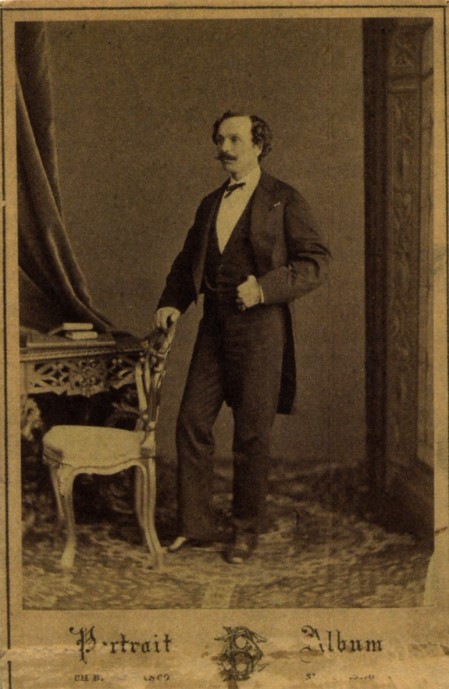
Marius Petipa, aged fifty-four (ca. 1872)
For his Saint Petersburg début, Petipa performed the leading role of Lucien d’Hervilly in the Russian première of Joseph Mazilier’s Paquita, which took place on the 8th October [O.S. 26th September] 1847. Gedeonov had commissioned Pierre Frédéric Malevergne to stage Paquita for the Imperial Ballet and the ballet could not been a better choice for Petipa since the role of Lucien d’Hervilly (originally created by his brother Lucien) was largely a mime role and the ballet contained Spanish gypsy dances, an area that Petipa knew very well. It seems that during rehearsals, his knowledge and helpfulness became apparent and he was named as co-producer with Frédéric. Petipa’s Russian début was a success, with the critic Rafail Zotov praising him as “a most excellent acquisition for our troupe”. Zotov also wrote of Petipa:
… [Petipa] danced in the pas de folie and the jaleo, which is say two character dances. His lightness and vigour were astonishing, but we await his future débuts in dances of a noble and serious genre before giving a detailed assessment – (Severnaia pchela, 6th October 1847, no. 225, p. 897-98)
In his memoirs, Petipa writes that Tsar Nicholas I attended his début performance and that a week later, the Tsar presented him with an Imperial gift of a ruby and diamond ring, the first Royal gift he received in his career.
Paquita would later go onto play an important role in Petipa’s career and this was just the beginning of Petipa’s great contributions to the Imperial Ballet repertoire. Gedeonov was clearly impressed with Petipa’s work on the production, enough to keep an open mind for more ballets to be staged and produced by the newcomer. The next ballet that Petipa would stage for the Imperial Ballet was another ballet by Mazilier, Le Diable amoureux, probably at Petipa’s own suggestion, but, like with Paquita, he would not stage the ballet alone. On the 24th October [O.S. 12th October] 1847, Jean Petipa arrived in Saint Petersburg, having been offered a three-year contract with the Imperial Theatres as teacher of the boys’ classe de perfectionnement at the Theatre School. Shortly after his father’s arrival, Petipa made his Russian débuts in two other roles that had been created by his brother: Ahmet in La Péri on the 7th November [O.S. 26th October] and Duke Albrecht in Giselle on the 5th December [O.S. 23rd November], with Elena Andreyanova dancing the titular roles in both performances.
In 1848, Petipa and his father staged Le Diable amoureux under the title Satanella. This was followed by revivals of many other Parisian ballets, especially after the arrival of the great French Ballet Master Jules Perrot in Saint Petersburg in 1849. Petipa collaborated with Perrot on the Saint Petersburg stagings of ballets such as Giselle and Le Corsaire. Throughout his first eight years in Saint Petersburg, Petipa staged many dances for opera and revived dances for Perrot’s revivals of older works.
Family
In 1850, Petipa became a father for the first time when his son, Marius Mariusovich Petipa (1850-1919) was born following a brief liaison with a woman named Marie Thérèse Bourdin, who died in 1855. Marius Mariusovich was raised by his father and his first stepmother; he attended a commercial school, but inherited his father’s artistic genes for he went onto become a very successful actor at the Alexandrinsky Theatre. In her memoirs, his youngest sister Vera, who met him when she was 12, writes that her parents often spoke of Marius Mariusovich and goes onto say: “He had a lot in common with my father, especially a great delicacy in his relations with people and an enormous joie de vivre.” Marius Mariusovich had three children, all of whom followed him to stage, with his son Nikolai Mariusovich Radin (1872-1935) becoming as equally a well-known actor as his father. In 1854, Petipa married the ballerina Maria Sergeyevna Surovshchikova (1836-1882), who was his first muse and for whom he created many of his early original ballets in Russia. The couple had two children – Maria “Marie” Mariusovna Petipa (1857-1930) and Jean Mariusovich Petipa (1859-1880s). Marie received a general education from tutors at home and was taught by her father in a home studio. Although Marie never accomplished great classical technique, she grew up to become one of the Imperial Ballet’s most renowned artists, creating a vast repertoire in her father’s works like her mother. Jean did not follow in his parent’s theatrical footsteps and attended cadet school, probably in Moscow, and became an officer. He died young, unmarried and childless, though the exact year of his death is unclear. After thirteen years, the Petipa’s marriage broke down and the couple separated in 1867. Maria Surovshchikova-Petipa died of smallpox on the 16th March 1882.
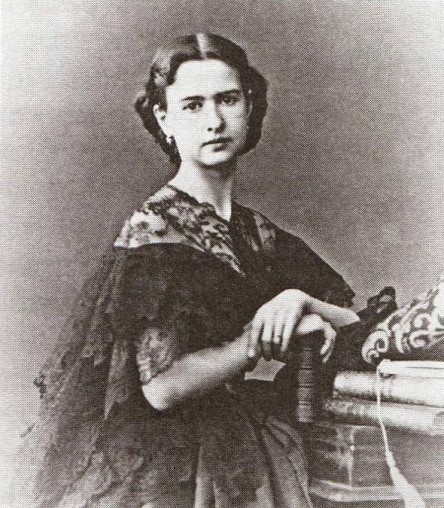
Maria Surovshchikova-Petipa, Petipa’s first wife (1860)
In 1874, Petipa began a relationship with the ballerina Liubov Leonidovna Savitskaya (1854-1919), who was thirty-six years his junior, though they were unable to marry until after the death of Petipa’s first wife. The couple had six children together – Nadezhda “Nadia” Mariusovna Petipa (1874-1945), Evgenia Mariusovna Petipa (1877-1892), Victor Mariusovich Petipa (1879-1939), Liubov “Louba” Mariusovna Petipa (1880-1917), Marius “Mari” Mariusovich Petipa II (1884-1922) and Vera Mariusovna Petipa (1885-1961). Like their brother Marius Mariusovich, Victor and Mari became actors. Victor enjoyed a thirty-five year career and was made an Honoured Artist of the Soviet Socialist Republic of Ukraine and Mari took to the stage after a career in the military, serving in the Calvary. Vera writes that her brother Mari was a prankster, who didn’t always recognize boundaries. She describes an occasion when, playing the part of a sentry, he arrived wearing such ludicrously hideous makeup that he provoked long laughter in the audience, hindering the actor who, as the King, was trying to deliver a sombre monologue. Mari had a son named Valeri and died at the young age of 38 following surgery for a hernia.
Petipa had not wanted dance careers for his sons, but it was the opposite for his daughters, for he wanted to see his artistic ideals flourish in them. However, although Marie enjoyed a long and successful career with the Imperial Ballet that lasted over twenty years, the same cannot be said for her sisters. Like Marie, Nadia and Evgenia received a general education from tutors and ballet lessons from their father at home in a ballet studio installed in their apartment with a raked floor. Even with his children, Petipa was an unsparing teacher, never fearful to give criticism, which was often challenged by Nadia. Nadia was accepted into the Imperial Ballet in 1892, but she was deemed as the least talented of Petipa’s daughters, often facing criticism for her weak classical technique, which resulted in her concentrating on purely mimed roles. She married Konstantin Chizhov, the son of Matvei Chizhov, a famous sculptor, and had five children, among whom were Nadia Konstantinonva Petipa-Chizhov (1896-1977), who became an actress, and Xenia Konstantiononva Petipa-Chizhov (1905-1975), who became a dancer. Nadia later became a teacher and moved to Kazan, where she opened a school in 1912. She died in 1945, aged 71.
For Evgenia, things had started better and she has been labelled as the most talented of Petipa’s daughters. Petipa was more than hopeful that she would grow up to enjoy a long and successful career in which she would express great technique and artistry, but his hopes were dashed by tragedy. In 1892, Evgenia was diagnosed with sarcoma (bone cancer) and had to have her leg amputated, but in the end, the amputation could not save her life. She died on the 26th August [O.S. 14th August] 1892 at the tragically young age of 15. Left distraught by his daughter’s death, Petipa dismantled the home ballet studio and enrolled Louba and Vera at the Imperial Ballet School. Like Evgenia, Louba proved to have great potential, impressing even Ekaterina Vazem, who was teaching by then. In her memoirs, Vazem wrote of Louba: “She undoubtedly had great ability and all the qualities to become an exceptional classical soloist and, probably, a ballerina with a soft, light style of dancing.” Louba graduated in 1899 and was given her first major role as Myrtha, Queen of the Wilis that same season, for which she received great praise and enthusiasm. It seemed Louba had a great career ahead of her, but that was not meant to be. Just a year after her graduation, she threw away a promising career when she retired early to get married. The marriage, however, proved to be ill-considered and miserable and Louba was left to live an unhappy life before dying in 1917 at the young age of 37.
Petipa’s first muse had been his first wife and his last muse was his youngest daughter Vera, whose artistic abilities he tried hard to develop and his hard work seems to have succeeded. In his diaries, Petipa writes with pride that Vera “was the best” at her graduation performance on the 15th May [O.S. 2nd May] 1903, after which she was accepted into the company. In 1904, she was cast as the White Cat in The Sleeping Beauty, in which she was encored, and was given a featured role in Harlequinade. However, in the summer of 1905, Vera fell ill with tuberculosis and although she recovered, it permanently weakened her health and forced her to take early retirement from dancing, ending what had started as a promising career. Vera did not depart from the theatre, however, and became an actress in 1907. She eventually began performing with her brother Victor and later her brothers Marius Mariusovich and Mari and her great-nephew Nikolai. Vera’s acting career took her to different regions of Russia, including Moscow, but her delicate health always remained an issue. Nevertheless, she lived a long life before dying in 1961, aged 76.
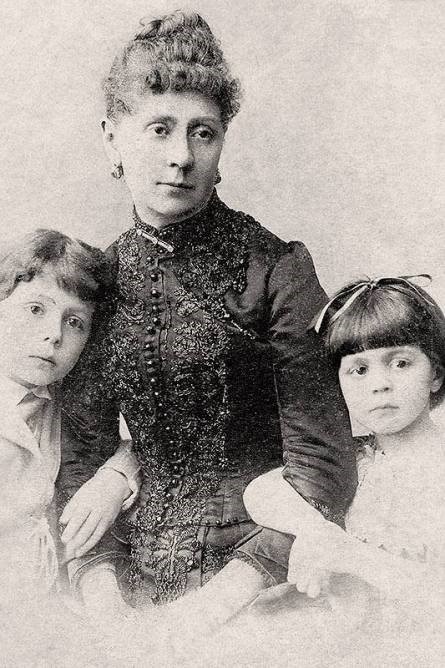
Liubov Savitskaya, Petipa’s second wife, and their youngest children – Mari and Vera (1889)
Premier Danseur and Second Ballet Master
In 1855, Petipa choreographed and staged the first of his own ballets for the Imperial Ballet – his ballet divertissement, The Star of Granada. This also marked his collaboration with Cesare Pugni, with whom he would create many of his early original Russian works. The success of The Star of Granada was followed by many other one and two act ballets of Petipa’s creation, all of which were choreographed especially for his wife and muse Maria, including The Rose, the Violet and the Butterfly (1857), A Marriage During the Regency (1858), The Parisian Market (1859), The Blue Dahlia (1860) and Euterpe and Terpsichore (1861).
Although Petipa was a very gifted and skilled choreographer, he had yet to gain the rank of Ballet Master. When Jules Perrot left Russia in 1858, Petipa anticipated succeeding him as Premier Maître de Ballet of the Imperial Theatres, but his hopes were in vain. Instead, the rank went to his fellow Frenchman, Arthur Saint-Léon, who would become Petipa’s rival.
Petipa remained Premieur Danseur of the Imperial Ballet for another four years, still making choreographic contributions to the repertoire. Finally, it was in 1862 that Petipa’s breakthrough as a choreographer came when he staged one of his most successful and colossal ballets of all time – The Pharaoh’s Daughter, a four-act ballet that told the story of a young English Lord who falls in love with an Ancient Egyptian princess in an opium-induced dream. It was in this ballet that Petipa danced his final role as a dancer, for the ballet’s colossal success won him the rank of second ballet master under Saint-Léon, who answered Petipa’s success of The Pharaoh’s Daughter with his 1864 ballet The Little Humpbacked Horse. Petipa’s years as second ballet master saw the stagings of his first and second lavish revivals of Le Corsaire in 1863 and 1868 respectively and the creations of his grand ballets Le Roi Candaule in 1868 and Don Quxiote in 1869, which was his first collaboration with Ludwig Minkus. Saint-Léon eventually left Russia for good in 1870, following the expiration of his contract.
Marius Petipa became Premier Maître de Ballet of the Imperial Theatres on the 12th March [O.S. 29th February] 1871. From then on, Petipa’s ingenious imagination and creative abilities gave way to the golden age of 19th century ballet – the Classical Era.
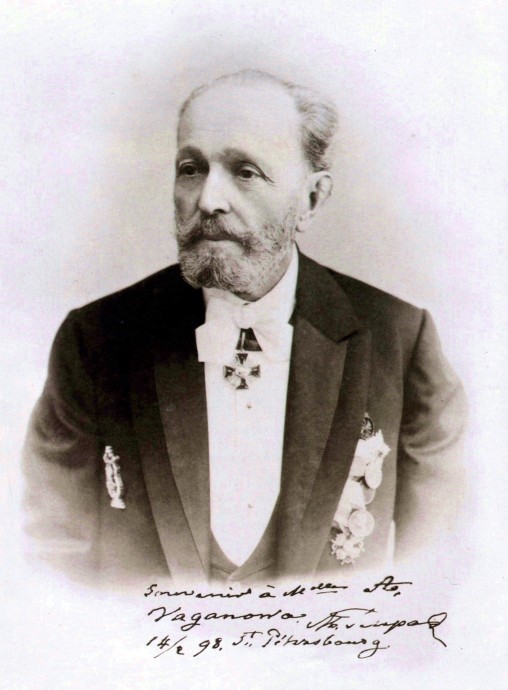
Maestro Marius Petipa, Premier Maître de Ballet of the Imperial Theatres
Premier Maître de Ballet
The Classical Era has been labelled as one of ballet’s most powerful eras as it was here that the most famous classical ballets known today were born from Petipa’s creation. From 1871 to the early 1900’s, the stage of the Saint Petersburg Imperial Theatre was flooded with many of his best works. With Minkus as Ballet Composer to the Imperial Theatres, the Imperial Ballet repertoire further expanded with new works such as La Camargo (1872) and The Daughter of the Snows (1879) and revivals of Jacques Offenbach’s Le Papillon (1874) and Adolphe Adam’s La Fille du Danube (1880). But the greatest masterpiece ever created by Petipa and Minkus’ collaboration was premièred in 1877 – La Bayadère, the exotic ballet most famous for its celebrated scene The Kingdom of the Shades.
In 1881, Ivan Vzevolozhosky was appointed Director of the Imperial Theatres, who transferred the Imperial Ballet from the Imperial Bolshoi Kamenny Theatre to the Imperial Mariinsky Theatre in 1885. The era of Vzevolozhosky’s rule of the Imperial Theatres was perhaps the best era in Petipa’s career. The early to mid 1880s saw Petipa staging lavish, grand revivals of many older works, including his 1881 revival of Paquita, for which Minkus composed the Grand Pas Classique, Pas de trois and Mazurka des enfants, and his first revivals of Giselle and Coppélia in 1884 and La Esmeralda in 1886. In 1885, Petipa collaborated with Lev Ivanov for the first time on a revival of Paul Taglioni’s version of La Fille mal gardée. With the arrival of the Italian ballerinas and danseurs in the late 1880s came new grand creations from Petipa, including The Vestal in 1888 and The Talisman in 1889, which was created for the Italian Prima Ballerina, Elena Cornalba.
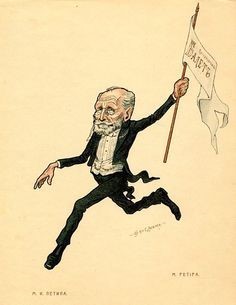
Caricature of Marius Petipa by Nikolai and Sergei Legat
The late 1880s and the 1890s is a time period that is considered by many as “the Golden Age of Russian Ballet”. Not only did Petipa flood the Imperial Ballet repertoire with some of his greatest works; the Saint Petersburg stage was dominated by some of the greatest dancers the world had ever seen. Among these great names were Pierina Legnani, Pavel Gerdt, Olga Preobrazhenskaya, Nikolai and Sergei Legat, Matilda Kschessinskaya and Enrico Cecchetti. The 1890s made way for some of the greatest classical ballets ever created, including The Sleeping Beauty (1890), The Nutcracker, choreographed by Lev Ivanov (1892), The Awakening of Flora (1894), Petipa and Ivanov’s restaging of Swan Lake (1895) and Raymonda (1898). This time period also saw Petipa’s final revivals of older works and some of his own, including his final revivals of Coppélia (1894), The Little Humpbacked Horse (1895), The Pharaoh’s Daughter (1898), Le Corsaire (1899), La Esmeralda (1899) and La Bayadère (1900).
Final years
After a successful career spanning six decades, Petipa’s final years with the Imperial Ballet were difficult. The turn of the 20th century saw new innovations imposed onto classical ballet, but it was Petipa’s bitterest enemy, Colonel Vladimir Telyakovsky who made things unbearable for the old Maestro. Despite having little knowledge of the performing arts, Telyakovsky was appointed Director of the Imperial Theatres in 1902 and one of his main objectives was to de-throne Petipa. His first attempt was when he invited Alexander Gorsky to stage his revival of Don Quixote at the Imperial Theatres. Indeed, Petipa was furious, but still showed no signs of slowing down, even at his elderly age of 83. Telyakovsky’s next attempt was when he apparently sabotaged Petipa’s 1903 ballet The Magic Mirror by allowing it to have the most appalling of stagings, which resulted in the ballet being deemed as a failure. In spite of this, Petipa continued to attend rehearsals and make changes to variations and other passages for dancers taking on new roles.
In 1903, he revived Giselle for Anna Pavlova and coached her for her début as Paquita in 1904. The year 1903 also saw Petipa creating what was meant to be his final ballet, The Romance of the Rosebud and the Butterfly to music by Riccardo Drigo and a libretto by Vzevolozhosky. For this ballet, Petipa cast the 14 year old Vaslav Nijinsky in his first stage role. The Romance of the Rosebud and the Butterfly was meant to have its première on the 5th February [O.S. 23rd January] 1904 at the Hermitage Theatre, but just two weeks before the scheduled première, Telyakovsky abruptly cancelled the ballet. His official reason for the cancellation was the Russo-Japanese War, but he neglected to inform Vsevolozhosky first. Petipa was left distraught by the cancellation; for him, it was the last straw and in his diaries, he writes in relation to the cancellation of the ballet: “My work is wasted.” In the aftermath, Petipa was rarely seen in the theatres, having become depressed and withdrawn. His sixty year-long career at the Imperial Theatres had come to an abrupt end.
Petipa remained in Saint Petersburg until 1907 and by then, his health was badly failing. On the advice of his physician, he and his family relocated to the resort in Gurzuf in the Crimea, where he spent his final years.
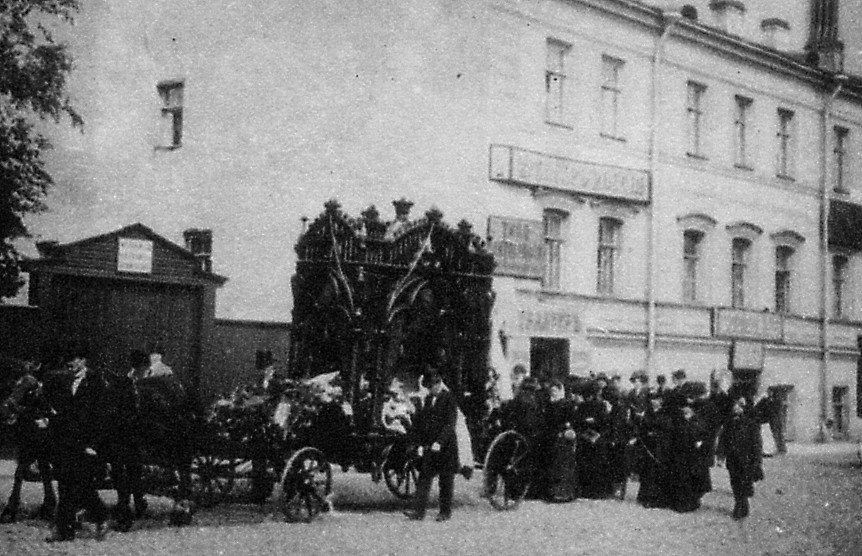
The funeral cortège of Marius Petipa (17th July 1910)
Marius Petipa died on the 14th July [O.S. 1st July] 1910, aged 92. In her memoirs, his daughter Vera wrote this very moving dedication to her father:
his trembling hand, guiding me towards the entrance on stage, when I, disoriented and frightened, hesitated before the dark chasm of the auditorium and shrank back. In my youth, when I was appearing before the public for the first time as a professional artist, in the ballet Harlequinade, I can never forget my father’s agitation and his whispered blessing in the wings. When I fell ill in Yalta and lay in a serious state with tuberculosis, my father, although an old man, somehow immediately stood alongside my mother as she bustled around me, and not knowing how to help me, whispered gentle words, stroked my head, and looked into my eyes, and offered to read to me— there was much, much reading.
Finally, the last sad memory— his death in Gurzuf, when we were all crowded round his bed and he says my name faintly and his fingers, growing cold, grip my hand. – Vera Petipa, Moia sem’ia, RGALI, fond 1945, op. 1, ed. khr. 66, l. (p. 32– 33)
His body was brought back to Saint Petersburg and his funeral was held on the 17th July [O.S. 4th July] 1910 and among those who attended were Olga Preobrazhenskaya, Anna Pavlova, Pavel Gerdt, Riccardo Drigo and Alexander Glazunov. According to one eye witness, however, no one from the Imperial Theatre administration attended. Petipa was originally buried in the family plot with his father, brother and daughter in the Volkovo Lutheran Cemetery in Saint Petersburg, but in 1948, his remains were transferred to the Alexander Nevsky Monastery, the burial place of his colleagues Tchaikovsky and Glazunov. Petipa left behind him a great legacy and his ballets still continue to dominate every classical ballet company repertoire to this day.
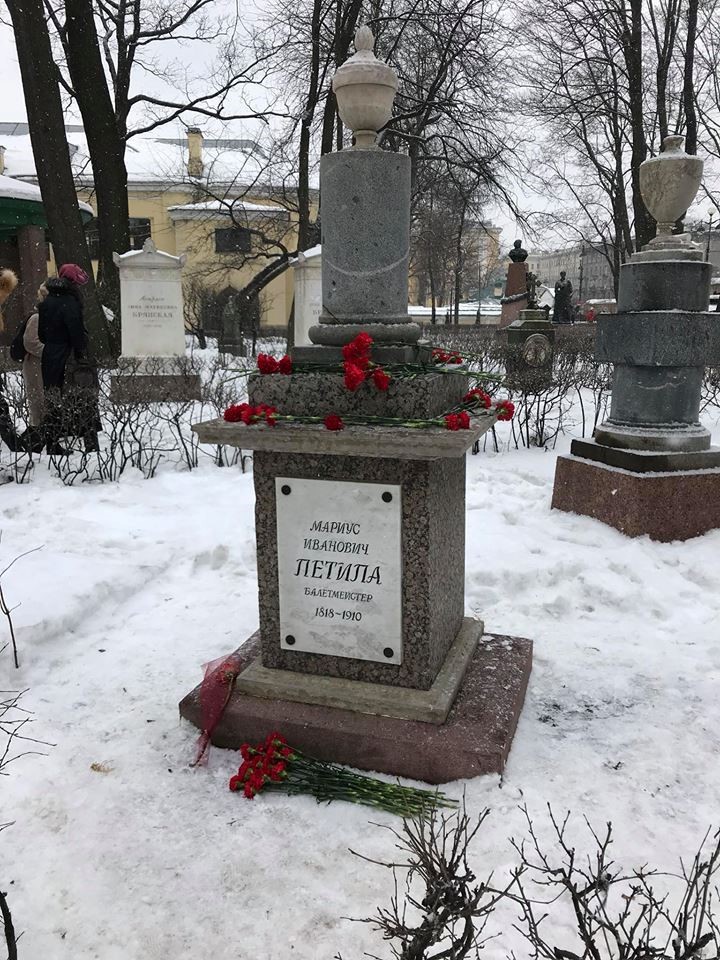
The grave of Marius Petipa in the Alexander Nevsky Monastery, Saint Petersburg (11th March 2018).
Amy Growcott, the Founder of The Marius Petipa Society
www.petipasociety.com